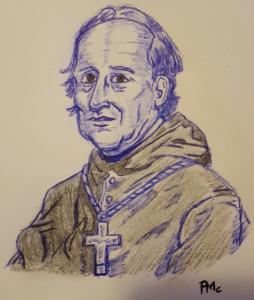
Race in American Life
When you look at English history, most scholars would agree that class is the defining issue. (Maybe that’s why TV series like Downton Abbey have been so popular.) But in America, professional historians concur that the key factor is race: slavery and Civil War, Reconstruction and Jim Crow, the Civil Rights Movement and the protests that have rocked the nation’s cities these last few days.
As we can see today from recent events, race continues to be a potent issue in America. It’s also a subject that Catholics had tried to avoid for a long time. This week at McNamara’s Blog we will look at race, racism, and American Catholicism, particularly with reference to the way it applies to white American Catholics. (The African American Catholic experience is a topic I plan to treat separately.)
This Week in McNamara’s Blog
What I plan to do over the next week is look at the following issues:
- Race in American Catholic Life: An Overview
- American Catholics and Slavery
- Convents White and Black
- The American Bishops and the Civil War
- African Americans and the Priesthood
- American Catholics and the Civil Rights Movement
- American Catholics and Race Today
Race in American Catholic Life
Why specifically white American Catholics?
Historically speaking, the Roman Catholic Church in the United States has long been a predominantly white Church, although the Hispanic presence is growing. According to one recent study, however, African Americans compose about three percent of the nation’s Catholic population. Over the next week, I want to focus on a difficult question that tends to be avoided: How have white Catholics been a part of American racism, and how have they transcended it?
As we will see, race and racism have affected every aspect of American Catholic history and life. However, this is an issue that was long swept under the carpet. Until the 1950’s, there was very little written about Black Catholics, and almost nothing on either race or American Catholic racism. That changed by the 1960’s, so that scholars are willing to acknowledge these major blemishes as they apply to the American Catholic experience.
Race and American Catholic History
Race has been a thorny issue from the start for white American Catholics. For one thing, many African Americans have long seen Catholicism as a “white man’s church” where they felt unwelcome. For another thing (and let’s be honest), for a long time American Catholic leaders were terrified of provoking anti-Catholicism. They were afraid to challenge their own racism and that of others. In a country dominated by white Anglo-Saxon Protestant males, they were unwilling to “buck the system.”
Still, as Professor John McGreevy pointed out in his groundbreaking 1996 book Parish Boundaries, racism was as much a factor in the twentieth century urban North as it was in the rural South. Besides being subject to housing discrimination in Northern cities, Black Catholics were banned from many parishes. In some rare cases, they were even castigated from the pulpit. In many of the twentieth century’s urban race riots, McGreevy points out, many of the white rioters were local Catholics.
Growing Up Catholic
As someone who grew up in New York City during the seventies and eighties, I can personally attest that race was an issue in predominantly Catholic areas. In my own neighborhood, for example, there were literally no neighbors of mine who were not Catholic or white. Throughout my formative years, I never saw a person of color in my parish church. Not until I read Father Cyprian Davis’s History of Black Catholics in the United States (1990) was I aware of that community’s rich contributions to Catholic life. And not until I read McGreevy ‘s study did I realize the full depth and extent of urban Catholic racism.
Why Do We Need to Talk About This?
Why? Because Catholics need to know their own history, good and bad, and learn from it going forward. That’s especially ironic, given the fact that we belong to a religion that is steeped in history. If we’re going to contribute to this nation’s common good, we need to learn from the past while looking to the future. And race is a paramount issue in American life. Catholics can and should be among those making a difference today!
(The drawing of Archbishop Carroll is by Pat McNamara.)











